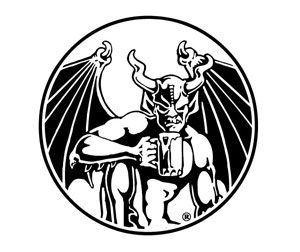
An editorial recently published by Greenville Online articulated the need for legislative change in South Carolina, calling to modify 80-year old laws that, the writers claim, are stymieing the growth of brewpubs in the state.
“It seems like a commonsense change in the law, especially given the potential impact such facilities could have in South Carolina’s more cosmopolitan, tourist-friendly areas such as Greenville and Charleston,” the op-ed posits.
“Such facilities,” in this case, refers specifically to Stone Brewing Co., the Escondido, Calif.-based brewery that is actively looking for a location to build an East Coast manufacturing facility. Part of the company’s vision for the project includes a World Bistro & Garden restaurant.
However, under current South Carolina law, the size of a new Stone Brewing facility would likely prohibit it from operating both a production brewery and restaurant.
“If a brewery in South Carolina serves food, it’s classified as a brewpub and can only brew 2,000 barrels or less per year, and it can’t distribute its beer,” according to the Free-Times.
Stone, the country’s 10th largest brewery, according to the Brewers Association, would no doubt be looking to produce much more beer than current South Carolina laws allow.
But Republican Senator Sean Bennett thinks he has a solution.
Known colloquially as the “Stone Bill,” S. 1230 seeks to up the annual brewpub production limit from 2,000 to 500,000 barrels. The senator proposed the bill last week.
Adds Greenville Online, “The law probably can’t be changed before Stone decides where it will put its new brewery, but the change could pave the way for other opportunities that could create jobs and benefit the state’s tourism industry.”
Speaking of paving the way, James Nielsen, a Canadian-born, California-based distance runner grabbed headlines this weekend after a video of the harrier running the world’s fastest (recorded) time in the “beer mile” was published on YouTube.
Nielsen, who completed the test of endurance in 4:57, is reportedly the first human to to break 5 minutes in the event.
You might be wondering, what exactly is a beer mile? The rules of are actually quite simple. The athlete must run four laps (1,609 meters, if we’re being specific) around a track, stopping after each to consume a full 12 oz. can of beer before continuing. Nielsen’s weapon of choice was Budweiser, which contains 5 percent ABV, the minimum needed to have one’s score considered.
The video of his record-breaking run has been viewed 655,000 times since it was uploaded to YouTube two days ago.
It’s not the first time a beer miler has made headlines, either. U.S. Olympic middle distance runner, Nick Symmonds, said last November that he too would attempt to break the “elusive 5-minute mark.”
“My aim is not simply to break the world record of 5:04.9, but to shatter it and run under the elusive 5-minute mark,” he wrote in a blog post. “The training will be grueling, both on the track and in the bar, but I truly feel this is a record that should be held by an American.”
With Nielsen already eclipsing the 5-minute barrier, the proverbial ball now appears to be in Symmonds’ court. Your move, Nick.
Is it possible that Nielsen completed his epic achievement using a little advice from Boston Beer Co. founder Jim Koch? In a recent article on Esquire.com, Koch offered up he how he’s able to drink beer all night without getting drunk.
Koch’s secret? He consumes one teaspoon of Fleischmann’s dry yeast for every beer right before he starts drinking.
“[I]t will mitigate — not eliminate — but mitigate the effects of alcohol,” Koch told Esquire.
Good to know.
Flying Dog Brewery disclosed not so much how its staff prepares to consume beer, but how it concocts its new recipes. The brewery, which is based in of Frederick, Md., yesterday announced the release of Dead Rise OLD BAY Summer Ale. Brewmaster Matt Brophy walked the Washington Post through the company’s process in developing the beer, which is made with local Old Bay seasoning.
First, the brewery gathered at Gambrill State Park for a brainstorming session (an annual practice), during which any employee could pitch an idea for any type of beer, as well as specific ingredients and a marketing plan.
Having decided to utilize Old Bay, the staff met with the company’s “flavor expert” to pick apart and get a better understanding of the basic recipe of the seasoning.
The beer took an additional six months to develop as Flying Dog was trying to answer one simple question: “what sort of beer would you want while eating crabs outdoors in beautiful Maryland weather?”
And thus came its newest summer ale.
“It’s the kind of beer where you’ll have more than one. It’s not the kind of thing where you’ll say ‘Wow, it really tastes strong, I think I’ll have something else next,’” Brophy told the Post.
Sounds perfect for a beer mile. Just don’t forget the Fleischmann’s.
